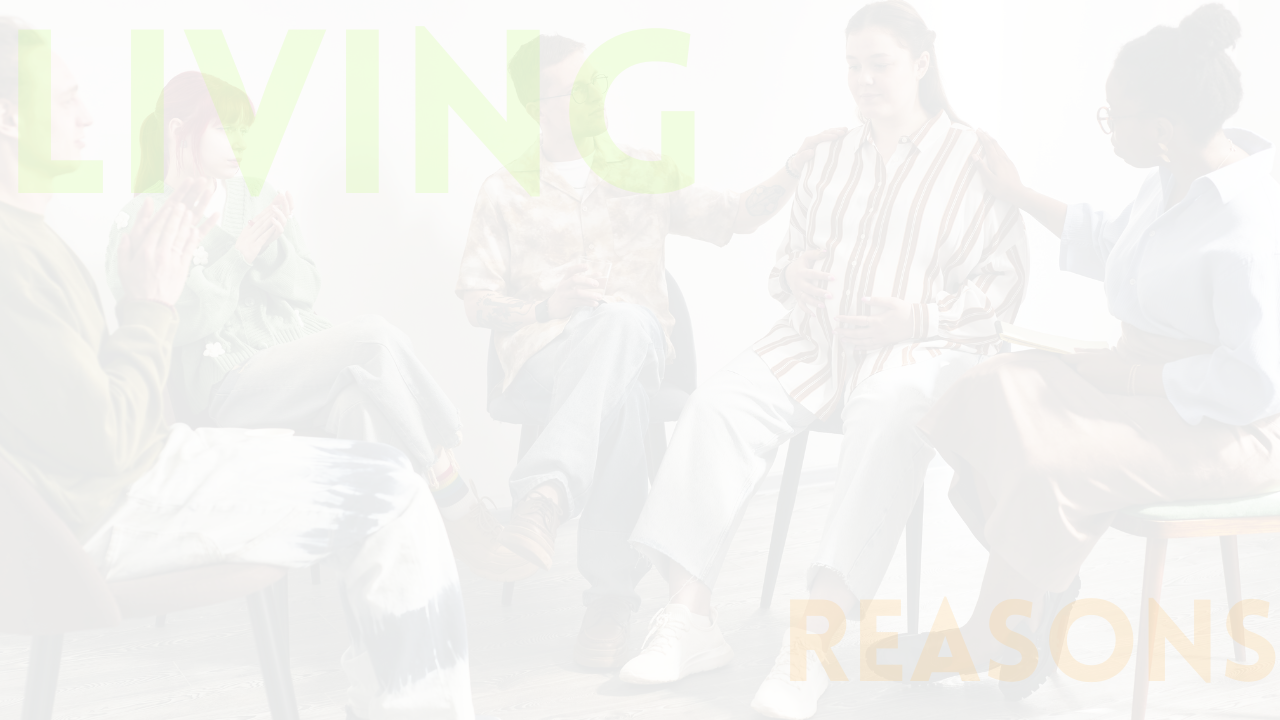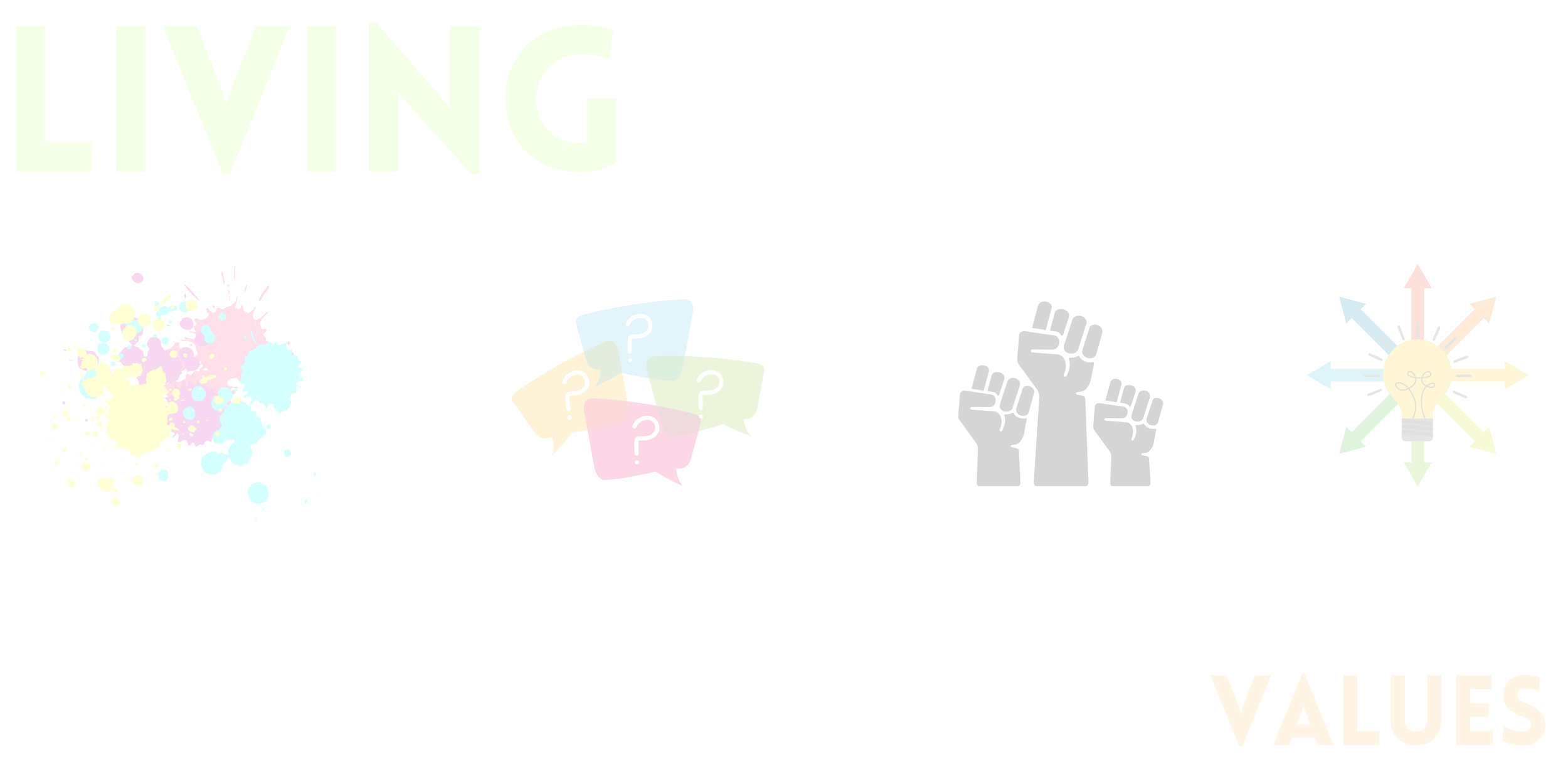
“Nothing about us, without us.”
Our Lived Experience Advisory Board guides everything we do. It ensures Living Reasons is always led by real experiences, not assumptions.

What is the Lived Experience Advisory Board?
The Lived Experience Advisory Board is the heart of Living Reasons. It is a non-executive body that advises our trustees and staff teams, ensuring every decision, project, campaign, and policy is rooted in lived reality.
Unlike many boards, this one is independent of our trustees. Trustees cannot sit on the board — to protect its independence and ensure discussions are not shaped or dominated by trustee expectations. This separation means the board is free to:
Raise issues in their own way.
Define priorities without pressure.
Share lived experience honestly, openly, and safely.
Trustees are always open to engaging with the board, but only when the board invites them in. This ensures the board leads the conversation, and trustees listen.

Purpose of the Board
The board exists to:
Guide Living Reasons on what matters most, based on lived experience.
Ensure policies, campaigns, and projects reflect real challenges and real needs.
Provide independent advice to trustees.
Share insights from across different lived experience perspectives.
Drive creativity and innovation in how we approach solutions.
In short: the board is not a token consultation. It is the driver of change in everything we do.

How the Board Works
1. Structure & Meetings
The full board meets digitally once per year.
Members are organised into defined subgroups, based on shared experiences.
Subgroups are encouraged to create their own structures — deciding when to meet, how to meet, and how to make decisions.
Subgroups can use any format that works: regular meetings, discussion forums, surveys, storytelling, or collaborative projects.
Before each annual meeting, the board will vote digitally to select members who will take on organisational roles for the following year — planning the full board meeting, shaping communications, and supporting board activities.
2. Ways of Sharing Experience
The board is flexible in how members share lived experience. This could include:
Support group discussions, where challenges are shared in confidence, and groups decide what to pass on to trustees.
Surveys or polls, designed by subgroups or with support from our Research & Analysis team.
Storytelling and creative projects, using real-life experiences to highlight problems and propose solutions.
Direct recommendations, where subgroups put forward projects, campaigns, or policy changes.
Creativity in how experiences are shared and solutions are developed is not just encouraged — it’s essential.
3. Conferences & External Influence
The board will also play a central role in our conferences (run with Living Reasons and Reasons Trading Limited). At these events, external bodies, companies, and institutions come together with us to discuss change.
As the representatives of lived experience, the Advisory Board will have a powerful voice in shaping discussions and influencing external decision-makers.

Who Can Join?
The Lived Experience Advisory Board welcomes people from three key groups:
Direct lived experience → individuals who have personally faced challenges in society (disability, health conditions, discrimination, barriers in work, services, or systems).
Supporters & carers → family members, guardians, and those who care for or support someone with lived experience.
Professionals from key sectors → people working in healthcare, education, agencies, or institutions who see first-hand the challenges faced and the barriers within existing systems.
This three-pronged approach ensures the board always considers the full picture:
The individual experience.
The impact on families and support networks.
The barriers within the systems meant to provide support.
Real change only happens when we see the whole picture — and the board exists to make that possible.
How to Join the Board
Joining is simple. Anyone with relevant lived experience (directly, indirectly, or professionally) is welcome to apply.
Submit an expression of interest → tell us a little about your experience and why you want to be part of the board.
Connect with a subgroup → we’ll link you with a subgroup that fits your lived experience, or you can help create a new one.
Get involved at your pace → whether through meetings, storytelling, or research, you choose how you engage.

The Lived Experience Advisory Board is not just a consultation tool. It is the foundation of Living Reasons. It ensures our work is always led by people, not assumptions; by truth, not stereotypes.
If you’ve ever felt your voice hasn’t been heard, this is your chance to make sure it is — and to help us build a society that truly listens.

Lived Experience Advisory Board – FAQs
❓ Who can join the Board?
Anyone with relevant lived experience can join — except trustees. This is to make sure the board remains fully independent and not influenced by trustee expectations.
The board welcomes three kinds of members:
Direct lived experience → people who face or have faced barriers, discrimination, health conditions, or inequality.
Supporters and carers → family members, carers, or guardians of someone with lived experience.
Professionals → people working in healthcare, education, agencies, or institutions who witness barriers first-hand.
This three-pronged approach ensures we consider the whole picture: the person directly affected, their wider support circle, and the challenges inside systems meant to help.
❓ How independent is the Board?
The Board is fully independent of trustees. Trustees cannot sit on it. This means:
Board members can speak openly and honestly without fear of being misunderstood or directed.
Conversations happen on the Board’s terms, not the trustees’.
Trustees are welcome to engage, but only when the Board invites them in.
This independence protects the Board’s freedom to define issues in its own way.
❓ How often does the Board meet?
The full Board meets once a year digitally.
Between these meetings, members take part in subgroups. Each subgroup decides for itself:
How often to meet.
What format to use (video calls, written discussions, support group-style meetings, surveys, etc.).
How decisions are made.
The idea is flexibility — subgroups work in the way that best suits their members.
❓ What do subgroups do?
Subgroups are where most of the Board’s work happens. They:
Share lived experiences in safe, supportive ways.
Decide together what experiences they want to share with trustees — and what they want to keep private.
Gather evidence (through storytelling, surveys, or research).
Suggest solutions, projects, or campaigns based on what they find.
Subgroups can be defined by shared experience (e.g. disability, mental health, carers) or created around specific issues members want to address. Members are free to set up new subgroups as they see fit.
❓ How do Board members share their experiences?
Board members can share lived experience in whatever way feels most comfortable. For example:
Talking openly in group discussions.
Sharing anonymously through surveys.
Writing personal stories or reflections.
Working with our Research & Analysis team to turn experiences into data.
Creating creative outputs (art, poetry, digital storytelling, etc.).
There is no single right way — the Board values creativity and flexibility.
❓ Who organises the Board?
Each year, before the annual full Board meeting, members can put themselves forward for roles that help organise activities and communications for the next 12 months.
These roles are voted on digitally by the Board.
They may include planning meetings, organising communications, or supporting subgroup coordination.
This keeps leadership democratic and refreshed each year.
❓ How does the Board influence Living Reasons?
The Board advises trustees and staff directly. It can:
Share lived experience insights.
Propose campaigns or projects.
Suggest reforms to policy or practice.
Highlight urgent issues not yet addressed.
The Board is not symbolic — it directly informs what Living Reasons does.
❓ What role does the Board play in conferences?
The Board plays a central role in Living Reasons and Reasons Trading Limited conferences. These conferences bring together external bodies, businesses, and institutions.
Board members are influential participants — ensuring that lived experience voices are heard by those with power to create change.
❓ What’s the time commitment?
The time commitment is flexible. Some members may:
Join regular subgroup meetings.
Contribute occasionally to surveys or discussions.
Focus mainly on the annual full Board meeting.
You decide how much you want to contribute — and how.
❓ What support is available for members?
We recognise that people engage in different ways. Support includes:
Digital access to meetings (all full Board meetings are online).
Freedom to choose communication methods (spoken, written, creative, anonymous).
Guidance from Living Reasons’ staff where requested.
Collaboration with the Research & Analysis team if subgroups want help gathering or presenting data.
Accessibility and inclusion are priorities — the Board exists for everyone, not just those who fit a traditional meeting format.
❓ How do I join?
Joining is simple:
Submit an expression of interest.
Tell us a little about your lived experience.
We’ll connect you with a subgroup or help you form a new one.











